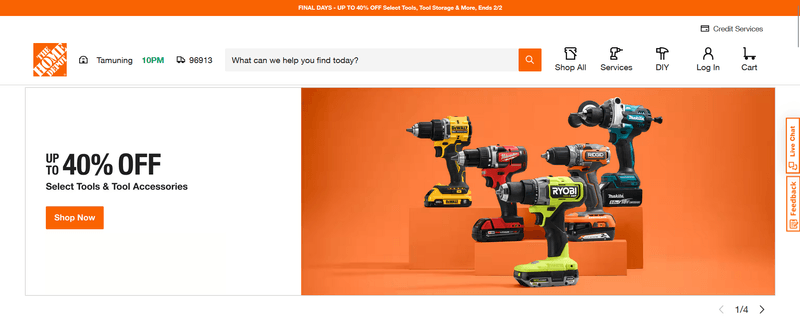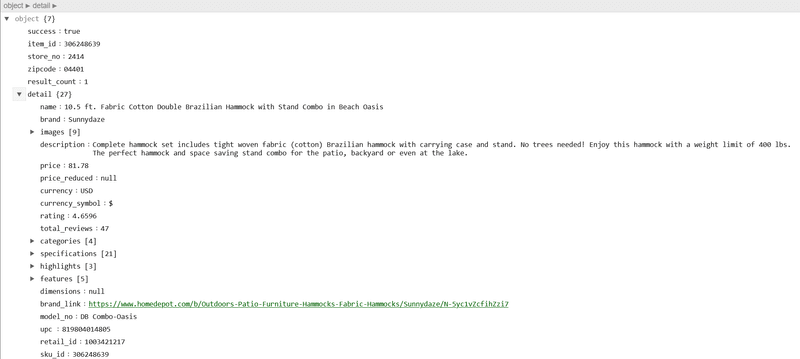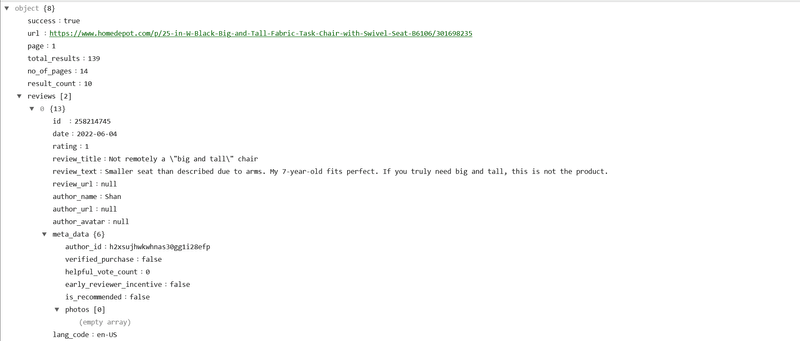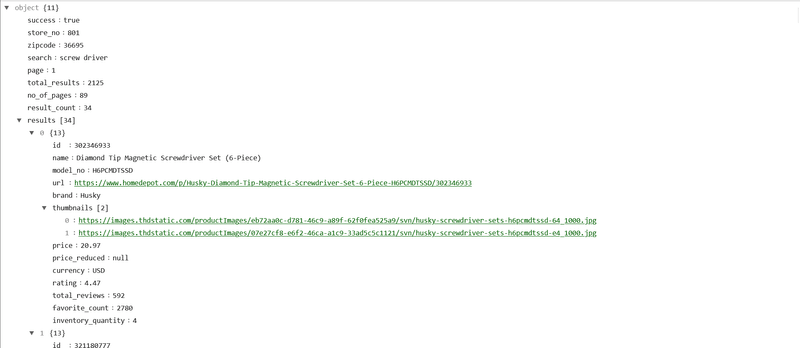How to Scrape Home Depot Data: A Step-by-Step Tutorial

Home Depot is one of the largest home improvement retailers in the world, offering a vast selection of products for DIY enthusiasts, contractors, and homeowners alike. Since its founding in 1978, Home Depot has expanded to include:
- Over 2,300 stores across the U.S., Canada, and Mexico
- Tens of thousands of products across categories like tools, appliances, and building materials
With millions of customers visiting its stores and website each month, Home Depot is a major source of insights for market research, product analysis, and consumer behavior trends. Businesses, analysts, and researchers can use data from Home Depot’s website to track pricing trends, product availability, and customer reviews.
However, scraping data from Home Depot isn’t straightforward. Like many major e-commerce platforms, it employs measures such as CAPTCHA challenges, rate-limiting, and IP blocking to deter automated scraping activities. This makes extracting data at scale a complex and technical challenge.
This guide will break down the process of scraping Home Depot using Python.
What We Will Scrape Today:
-
Home Depot Product Data: Gathering detailed product information such as descriptions, specifications, availability, images, and pricing details.
-
Home Depot Product Reviews: Collecting customer reviews, including ratings, review titles, review text, submission dates, and whether the purchase was verified.
-
Home Depot Search Results: Extracting product listings returned for specific search queries, including product IDs, names, categories, and prices.
Let’s get started!
Python Tutorial: Scraping Home Depot with Unwrangle API
Step 1: Prerequisites
Before you begin, ensure you have the following:
- API Key: Sign up on Unwrangle to get your API key.
- Python Installed: Make sure Python 3.x is installed on your system.
- Requests Library: Install the requests library if you don’t already have it by running:

Step 2: Making a Basic API Request
To scrape Home Depot data, you need to make a GET request to the /api/getter endpoint with the following query parameters:
-
Platform: Specify the API type (homedepot_detail, homedepot_reviews, or homedepot_search).
-
URL/Search: Provide the product URL, search term, or other required details based on the API type.
-
API Key: Include your Unwrangle API key to authenticate the request.
-
Additional Parameters: Include optional parameters such as store number, zip code, or page number, depending on the API.
Home Depot API Query Parameters
Here is a table of the essential query parameters for scraping Home Depot data using the Home Depot Product Data, Reviews, and Search Results APIs:
| Parameter | Description | Required/Optional | Default Value |
|---|---|---|---|
| platform | Specifies the scraping engine to use (e.g., homedepot_detail, homedepot_reviews, homedepot_search). | Required | None |
| api_key | Your account's API token, required to access the Home Depot APIs. | Required | None |
| url | URL of the product listing on HomeDepot.com. Remove unnecessary query parameters and percent encode the URL. | Required | None |
| item_id | Item ID of the product, found in the product listing's URL. This can be used instead of the url parameter. | Optional | None |
| store_no | The Home Depot store number. This can be found via the Home Depot Store Search API. | Optional | None |
| zipcode | Zip code of the store. Used when fetching details specific to a store. | Optional | None |
| search | The keyword used in a search query on HomeDepot.com (e.g., screw+driver). | Required (for search) | None |
| page | The page number of results to fetch (for product reviews or search results). | Optional | 1 (Max value depends on API) |
Notes:
-
platform and api_key are required for all requests.
-
The url parameter is required for product data and reviews, while search is needed for search results.
-
The store_no and zipcode are required for location-based queries.
-
The page parameter can be adjusted based on the pagination of results, but for product reviews, the maximum page number is 51.
Home Depot Product Data API
Scrape detailed Home Depot product information with a single API call.
A GET request to the /api/getter/?platform="homedepot_detail" endpoint lets you scrape product data for any HomeDepot.com product listing URL in real time.
Example:
Here’s an example of how to scrape product details using a product URL:
Here's how result would look like:

Home Depot Product Reviews API
Easily scrape Home Depot customer reviews in real time with a simple API call.
Use a GET request to /api/getter/?platform="homedepot_reviews" to extract customer reviews for any product listed on HomeDepot.com.
Example:
Here’s how to scrape reviews for a product using its URL and the desired page number:
Tip: The results are sorted by recency, with the most recent reviews appearing on page 1.
Here's how result would look like:

Home Depot Search Results API
Scrape Home Depot search results](https://docs.unwrangle.com/homedepot-search-results-api/) directly from their search engine with ease.
A GET request to /api/getter/?platform="homedepot_search" allows you to fetch real-time search results for specific keywords, store numbers, and zip codes.
Example:
Here’s an example showcasing how to scrape search results for the keyword "screw driver," using a specific store number and zip code:
Here's how result would look like:

Looking for an Easier Way? Try Unwrangle API
If manually scraping Home Depot feels too slow or complicated, the Unwrangle APIs can make your life much easier. With just a few API calls, you can:
- Get all the product details you need, like prices, images, descriptions, and specifications.
- Quickly fetch customer reviews, including ratings, review text, and submission dates.
- Work with simple, ready-to-use JSON responses that are easy to handle in your code.
With an API key, you can start accessing Home Depot data without the need to build a scraper from scratch.
